My name is Sophie Connor and I’m the Archive Conservator for this project.
In the broadest terms, my job here is to make sure archive materials won’t be harmed in the process of digitisation, and to make sure as much information as possible (text or image) is visible when photographed.
I’m lucky to be working with such a varied archive collection – there are a lot of documents, but there are also a lot of art objects, such as drawings, sculptures, sketchbooks, photographs and negatives. This means my experience in museum conservation, working mostly with fine art, comes in handy.
So far I’ve spent a lot of time surveying, which means looking at the archive items and writing down anything I need to do to make the objects safe for digitisation, or to uncover information. The next step is treatment.
My impulse as a conservator is to fix everything, but conservation for digitisation is all about making decisions. If I were to fix every small tear and unfold every folded corner, we’d have to double the conservation time for the project.
This means with every issue I come across, I have to answer several questions:
- Is the visibility of the image affected?
- Are there folds or creases that cover or change the image?
- Are there tears through the image?
- Were these there when the artist created the object?
- Will the object be damaged by the digitisation process?
- Will this tear extend when the object is handled?
- How far can this book be opened safely without putting strain on the binding?
- Is this damage or is it part of the object or its history?
The two main issues I’m dealing with are:
Folds
Sometimes they’re small and don’t cover any image or text, in which case I leave them, such as this one.

© Leonore Hakansson, included from the Archive of Ronald Moody
Where they cover information, they will need unfolding before photography, such as this sketchbook page where the fold interferes with the image:
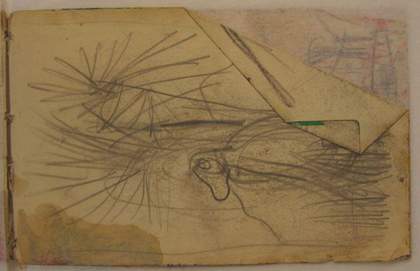
© The Estate of Graham Sutherland
Or this letter, where the obscured text would make transcription difficult:
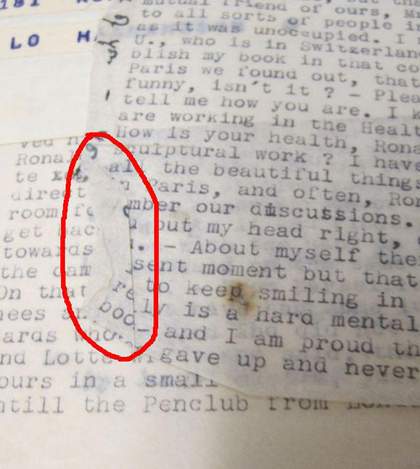
© Leonore Hakansson, included from the Archive of Ronald Moody
Sometimes they prevent the cataloguers from seeing what the image depicts, such as this piece:
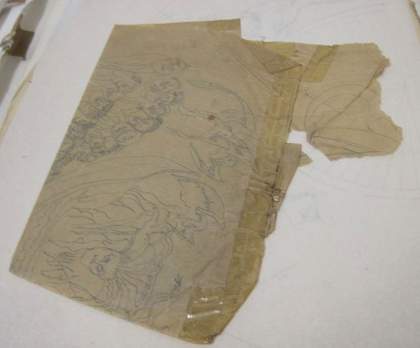
From the Archive of Felicia Browne
Tears
Small ones don’t present a great risk, but the large ones can make handling difficult and put the object at risk of further tearing.
This is the piece above, unfolded slightly – these tears are large and make it difficult to unfold the object so must be repaired, but first it must be flattened. This piece needs a lot more work!
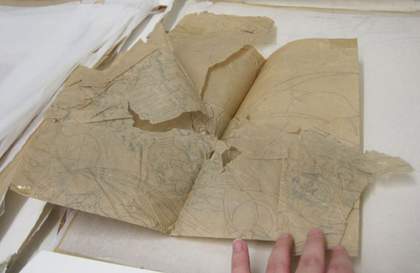
From the archive of Felicia Browne
In this sketchbook it appears the book was closed while the paint was still wet. When it was opened again, the page tore – part of it remained stuck to the opposite page.
This makes the images on both sides difficult to interpret, so I or a colleague will attempt to separate the torn section and re-attach it to the page it came from.
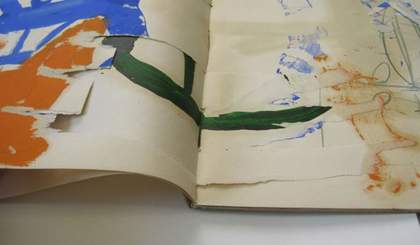
© The Estate of Graham Sutherland
Finally, here is some damage that might be part of the object – the writing goes around the burn, but was that deliberate, or is it a coincidence and actually later damage caused by, say, trying to read the writing by candle light?
The dark areas are brittle and make the object difficult to handle, but any repair will change the object – in this case I’ll discuss this letter with a curator, and we’ll reach a decision together about how to stabilise this object for digitisation.

© Ivor Davies, included from the Archive of Ian Breakwell
Stay tuned for treatment updates on some of these objects later this year!
